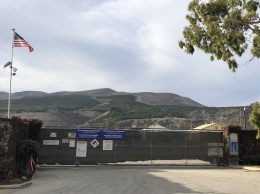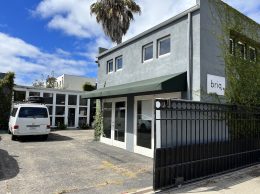Our view: Break the gridlock on economic vitality
IN THIS ARTICLE
- Editorials Topic
- Editorial board and Henry Dubroff Author
By Editorial board and Henry Dubroff Friday, August 18th, 2017
It’s time for communities across the tri-county region to cast off their legacy of squabbling over sales tax revenue and work together on a robust model for economic vitality.
That was our takeaway after traveling to Colorado’s Front Range cities of Boulder and Denver with business and community leaders from the San Luis Obispo Chamber of Commerce.
During their tour, leaders from SLO County and its major cities were able to absorb lessons from a quarter-century of economic outreach efforts that look far different from the profile presented by the Central Coast.
One big difference is a concentrated effort to persuade voters to tolerate a higher level of population growth, provide housing in urban and suburban environments and not accept playing one off against another when it comes to recruiting new employers or providing incentives for expansion.
The second is recognizing the strengths of the region and not preying on the weaknesses of neighboring cities and counties. That requires a commitment by leadership to take risks, make things happen and set priorities so communities can utilize their strengths.
So far, all three counties in our region — Ventura, Santa Barbara and San Luis Obispo — have succeeded in spite of the no-growth politics that have contributed to tremendous social inequality, put pressure on the environment and strained the quality of life.
Vibrant hubs for entrepreneurship exist in the Conejo Valley, in the Santa Barbara-Goleta corridor and in San Luis Obispo but housing is in short supply and opportunities for growing a larger company are extremely limited.
Meanwhile, western Ventura County, northern Santa Barbara County, including Lompoc, and northern SLO County offer opportunities with vast potential for growth and development for larger companies and a new middle class.
IN MEMORIAM: ROY LUNN
Roy Lunn, an automotive engineering legend and the “Godfather of the Ford GT40,” died on Aug. 5 at the age of 92 after suffering a stroke.
The Santa Barbara resident was born and educated in England, where he served in the Royal Air Force during World War II. He started his automotive engineering career in 1946, designing cars for Aston Martin before joining Ford. He moved to the U.S. in 1958 and became responsible for a number of Ford projects, including the GT40.
In 1971, Lunn joined American Motors and helped engineer the Jeep Cherokee XJ, considered to be the first modern, lightweight, four-wheel-drive, unibody SUV. He is also credited with the AMC Eagle, the first production four-wheel-drive car.
In 1987, he retired to Florida but started designing a new “people’s car” that could be made with sustainable materials. After relocating to Santa Barbara in 2015, he continued developing the “people’s car” with the help of mechanical engineering students at UC Santa Barbara.
Lunn was inducted into the Automotive Hall of Fame in 2016 for overseeing the development of the Ford GT40 that ended Ferrari’s domination of endurance sports car racing. GT40s won Le Mans from 1966-1969.
Lunn is survived by his wife of 70 years, Jeanie, two daughters, two granddaughters, a son-in-law and a great-grandson.
In lieu of flowers, the family suggests donations to UCSB.
Related Articles
 Friday, October 14th, 2022
Friday, October 14th, 2022











